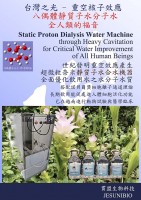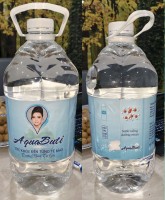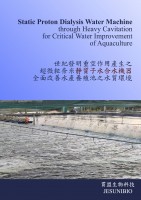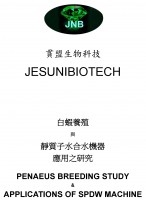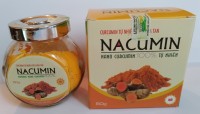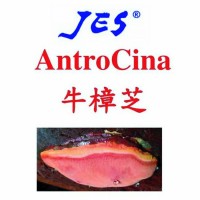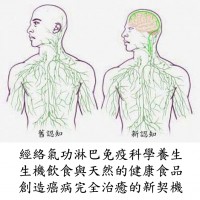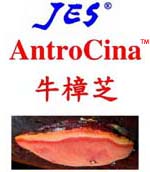Shrimp breeding and SPDW
《Product Content》:
JESUNIBIOTECH
PENAEUS BREEDING STUDY &
APPLICATIONS OF SPDW MACHINE (中文)
資料來源: 台灣養蝦碩士劉懷德先生
1.1 Introduction to Penaeus vannamei
Penaeus, commonly known as white shrimp, white leg shrimp or Pacific white shrimp, is a species of the family Penaeus that lives on the east coast of the Pacific Ocean. The origin is on the Pacific coast of Central and South America, mainly distributed from southern Mexico to northern Peru. In the early 1980s, the Fisheries Division of the Council of Agriculture (COA) introduced this species to Taiwan. Due to the impact of the grass shrimp virus in 1988 and the white spot virus in 1992, the cultivation has not been very effective. In 1994, the private sector introduced pathogen-free shrimp mass production technology from Hawaii, and it became one of the four major species of shrimp culture in Taiwan.
Due to their high adaptability to harsh environments, strong disease resistance, and delicious meat, white shrimps have largely replaced grass shrimps and become the main cultured shrimp species in Taiwan.
1.2 Habits of Penaeus vannamei
1.2.1 Survival temperature
White shrimp is an omnivorous shrimp, and algae, plankton and feed in the water are all part of its daily menu. In terms of temperature, 26 to 28 degrees Celsius is the most suitable for their growth. If the water temperature exceeds 38 degrees Celsius, white shrimps will die easily. If the water temperature is below 15 degrees Celsius, white shrimps will curl up at the bottom of the pool and start not eating. If the water temperature is below 9 degrees Celsius, When the temperature is below 6 degrees Celsius, the activity of white shrimps drops to a minimum, and they begin to die in large numbers when the temperature is below 6 degrees Celsius. The systems required for white shrimp reproduction generally include a mating tank (or ripening tank), a shrimp breeding tank, an air supply system and a heating system: the ripening tank is mainly used for the ripening of breeding shrimps, and male and female breeding shrimps can be mixed or cultured separately. , the water temperature is generally set at 27±1℃, and raw bait is fed (caterpillars, squid, oysters, lugworms, Antarctic shrimps, etc. are mixed and used for breeding). Mature shrimps will mate after about 3 p.m. every day. Phenomenon, eggs will be ovulated and fertilized after 7 p.m. that day. The fertilized eggs are sinking eggs. When the water temperature is 27±1°C, the shrimp hatch out after about 18 hours and are called nauplii (moth larvae). There is no need to provide food during this period. , there are 6 metamorphosis periods. Generally, the shrimp larvae will be collected into the shrimp larvae breeding tank by using their phototaxis during this period. When the water temperature is 27±1℃, after 45-60 hours of incubation, the water temperature of the breeding tank can be increased to 30±1℃. , the salinity should not be lower than 2.8%: after the nauplii metamorphose into eye larvae (drag stage), they need to be fed with plant food (monocystis such as Osteospermum, Platyphylla chowdenii, Chaetoceros moulii, Isochrysis algae, etc.), shrimp flakes and artificial particulate feed, etc., will undergo three metamorphoses during this period. When the water temperature is 30±1°C, it normally takes 4-5 days: 1 and then the sugar shrimp seedlings (hanging stage) ), the feeding feed is mainly animal-based, such as shrimp flakes and artificial particulate feed, and the water temperature is 30±2.1 At 1°C, it normally takes 4-5 days and undergoes three metamorphoses; after the seed shrimp seedlings, there are later stage larvae (positive swim test). The food fed during this period is brine shrimp larvae and shrimp flakes. Mainly with extra-fine powdery feed, and then the shrimp larvae stage will be defined according to time. For example, the 15th day of the late metamorphosis of the larvae is called PL15. After PL15, the larvae are red-rib larvae, black-shell larvae, inch larvae, etc. according to their body shape. Post-larvae shrimp seedlings are mainly fed with artificial compound feed; the above are the equipment, processes, operating conditions and methods required for shrimp seedling reproduction; As for indoor and outdoor, each has its own advantages and disadvantages, indoor operating environmental factors are easier to control, but the cost is higher , outdoor operation is just the opposite.
1.2.2 Salinity range
Generally speaking, estuary water is a mixture of fresh water and sea water. The average salinity of sea water is 3.4%, and the salinity of fresh water is generally less than 2%. (Pearl River Fisheries Research Institute, Chinese Academy of Fishery Sciences, 2003, Lin Wenhui, Pond Breeding Water Quality.) White shrimp can withstand harsh environments and has a wide adaptability to salinity in the water. Studies have pointed out that white shrimp can adapt from 0 degrees to 5 degrees (that is, salinity 0 to 5%). When the salinity is 1-2 degrees , most suitable for its growth, and the salinity in the water also has a bactericidal function. There are also successful cases of white shrimp breeding in 0 degree water, and there are also successful cases of breeding in 5 degree water.
1.2.3 Activity habits and growth needs
Benthic animals: White shrimp originates from the Pacific coast of Central and South America. It is originally suitable for saltwater culture. In Taiwan’s breeding ponds, its activities and habitat are at the bottom of the pond. There is no conflict with the activity areas of general cultured fish, so In fish pond culture, traces of polyculture can be seen everywhere. Its activity habits and growth needs are as follows:
1. Swim against the current
In the breeding pond, the shrimp larvae stage will move along the current. When they reach the larvae stage, the white shrimp will have the habit of swimming against the current.
2. Dissolved oxygen (DO)
Most of the dissolved oxygen in the water body is not used by farmed animals.
According to research, about 50%-70% of the dissolved oxygen in the water body is not consumed by farmed animals, 30%-40% is consumed by excrement and residual bait, and about 8% is consumed by sediment. , only 5%-12% is consumed by farmed animals, White shrimp pond water requires higher dissolved oxygen, and the best dissolved oxygen value is 6mg /L or above, if the dissolved oxygen value is lower than 2mg/L, the white shrimp will not eat.
3. Acidity and alkalinity (pH value)
Generally, white shrimps are suitable for living in an alkaline environment. The pH value can be between 7.5 and 9.5. The more suitable pH value is between 7.6 and 8.5, and the change should not be too big.
4. Transparency
Generally, it is best to maintain a certain degree of transparency in shrimp ponds, about 30 centimeters. When new shrimp seedlings are introduced, the water should not be too clear.
The algae phase must be sufficient so that the shrimp seedlings can grow easily.
1.2.4 Current Taiwan domestic white shrimp farming methods
1. Mixed culture method
At present, most of the farming methods in Taiwan are polyculture, that is, fish (milkfish, mullet, etc.) and white shrimps are cultured in pond water. There are even those who breed Thai shrimps in a polyculture. The culture method is to culture fish in water bodies and feed them with the remaining bait. This feeding method is the most economical for benthic white shrimp or Thai shrimp. It does not waste feed and can maintain a relatively stable water body. It is a high-efficiency and cost-effective breeding method. However, once there is a problem in the water body, it is not easy to take care of both fish and shrimp.
2. Specialized feeding method
Only white shrimps are cultured in the pond water, and other seafood species are not cultured. It is a specialized culture method. More and more young people on the market, even teachers, professors, etc., have the courage to try and breed white shrimps in specialized ways, some indoors and some outdoors. However, most of them end in failure.
1.3 Selection of postlarvae of Letopenaeus americanus from Central and South America
1.3.1 Criteria for selecting shrimp larvae
The selection criteria for white shrimp larvae are generally based on the following points:
1. Appearance of shrimp seedlings
Avoid uneven sizes or deformities.
2. Activity status
Shrimp larvae will "stick to the wall" when the water is stopped. If they continue to move upstream, it is an abnormal state; in the flow under the current state, there will be a phenomenon of going against the current, and the faster the speed, the healthier the shrimp seedlings will be.
3. Shrimp tail fan
The wider the tail fan opens, the healthier the shrimp larvae are.
4. Microscopic examination
You should use a magnifying glass or microscope for microscopic examination. If you find scratches, broken legs or deformities on the surface, you should not buy it. You should choose one with a smooth surface, no dirt, full abdominal muscles and slightly longer branches. good.
5. Excellent manufacturers
When choosing shrimp larvae, it is generally recommended to rely on trusted shrimp larvae manufacturers. With a well-booked shrimp larvae manufacturer, the shrimp larvae will grow faster and have a better breeding rate.
1.3.2 Current domestic shrimp seed production model
1. Import of shrimp seedlings
Shrimp larvae are directly imported by air from abroad. This method is expensive and is currently used by few people except for research institutions for cultivation purposes.
2. import of seed shrimp
That is to say, both male and female shrimps are imported from abroad, bred and cultivated in Taiwan. The shrimp larvae produced in this way are what the shrimp larvae market calls "imported". They have fast growth speed, strong immunity, and high breeding rate. At present, a few excellent shrimp seedling manufacturers are working hard to change these characteristics.
3. Local production It is also commonly known as "local". Shrimp breeders select larger and stronger male shrimps and mate with female shrimps to produce them. This production method is due to inbreeding and the abuse of drugs to induce labor, resulting in shrimp resistance. If the strength is weak, the breeding rate will be poor, and in a vicious cycle, it will be difficult to achieve good results.
4. second generation shrimp seedlings
At present, the most common way to produce shrimp larvae is to cultivate the first generation of the above-mentioned "imported" shrimp larvae, and then select excellent male and female shrimps from the first generation for mating and production, and the second generation of shrimp larvae will be cultivated.
1.3.3 Shrimp larvae genes
1. Imported shrimp seedlings
Many foreign aquatic products companies are conducting shrimp gene research to study the growth rate, immunity and breeding rate of white shrimp. Domestic shrimp seedling manufacturers introduce and use varieties such as SIS, CP Baiyekuai, etc., emphasizing high antibodies and fast growth.
It only takes less than 2 months to reach 40 pigs per catty (i.e. 40 fish per catty), which is a big benefit to domestic white shrimp farming.
2. Local shrimp seedlings
Traditionally, large and stronger shrimps have been selected for mating and production, which may lead to concerns about inbreeding.
At present, the domestic aquaculture laboratory is conducting various research and cultivation to produce excellent shrimp seedlings for breeding.
1.4 General symptoms of white shrimp illness
1. Shrimp whiskers We can observe the shrimp whiskers. If they are closed, or one is long and the other is short, it may be a bacterial infection.
2. Shrimp tail
Observe the condition of the shrimp tail. If there are black spots, it may be a bacterial infection. If the shrimp tail turns red, it may be because hydrogen sulfide burns the shrimp body. Observe the color of the shrimp tail. The shrimp tail is yellow at the beginning because the shrimp fry eat it. In principle, whatever the shrimp larvae eat will determine the color of the shrimp tail.
3. Liver
Observe the liver of the shrimp to see if it turns yellow or red. These conditions are problematic.
4. Intestine and intestines
Normally, the intestines and stomach of shrimps will not appear in jejunum state. If jejunum state occurs, they must be sick. If enteritis occurs in shrimp, jejunum and empty stomach will occur.
5. Shrimp head
Generally speaking, if the heads of shrimps are yellow and black, it means that they may be invaded by bacteria and viruses, or microorganisms in the water such as bellworms have invaded. At this time, the water quality in the shrimp pond is relatively poor.
6. Shrimp feet
Check the swimming legs of the shrimp, which is where they crawl into the water, to see if there is any yellowing or redness. If there is any yellowing or redness, it may be infested by bacteria and viruses such as Taura virus or Marine Vibrio.
7. Shimp gills
Normal shrimp gills are transparent. If the shrimp gills turn yellow or black, they may be infected with luteinosis or bellworms.
8. Shrimp body
If the shrimp has white spots on its body, it may have white spot virus; if it appears black, the ammonia nitrogen concentration in the water may be too high.
1.5 Elements required for the growth environment of white shrimp
1.5.1 Water quality
As the saying goes, shrimp farming is about raising water. Some people say that the water environment is a part of water chemistry. Can shrimps be raised in simple mineral water? The answer is yes, but shrimps cannot grow large and cannot meet our needs for farming. Therefore, we must establish high-quality water The environment is actually the first priority in shrimp farming, so some people may ask, how to establish a high-quality environment in the water? In fact, it is not that difficult, to put it simply. The bottom of the pond must be clean and there should not be too much hydrogen sulfide (H2S), otherwise it will inhibit the growth of shrimps and the breeding rate cannot be improved. Secondly, there must be algae, probiotic algae or algae suitable for shrimps, shrimps and fish Differently, in addition to eating feed, shrimps will also eat algae, plankton, and even offal fish and offal shrimps. Shrimps are very greedy aquatic creatures, so when the water in the breeding pond is not healthy or high enough, it is impossible to establish A high-quality environment in the water will not allow species diversity to be established, the food for shrimps will be limited, and the water quality will not be healthy enough. You are right, shrimps will naturally grow slowly.
1.5.2 Bacteria
Purifying water quality with dominant strains of bacteria is a new trend in modern breeding. Only by making good bacteria the dominant strains in the water can a high-quality environment in the water be established. The photosynthetic bacteria are used as the main body to maintain stable water quality, and Bacillus subtilis and lactic acid bacteria are used for expansion. The expanded water is added to the feed, allowed to ferment, and then fed.
The aforementioned photosynthetic bacteria are mild bacteria, including aerobic bacteria and anaerobic bacteria. Therefore, this kind of composite bacteria has many functions.
We use Above all, more emphasis is placed on [the function of photosynthetic bacteria in removing hydrogen sulfide, removing nitrite and stabilizing water quality .
Regarding the function of stabilizing water quality, our opinion is that photosynthetic bacteria have the effect of buffering agents, so they can stabilize water quality. The new trend of modern breeding is to use dominant bacteria to change the pool water environment to achieve the purpose of optimizing the water environment and purifying water. According to the oxygen-loving habits of bacteria, they can generally be divided into three categories:
1. Aerobic bacteria
According to the literal meaning, this type of bacteria likes air, needs oxygen to survive and work, and can reach To decompose organic matter, animal and plant carcasses, feces and residual food, common bacteria such as Bacillus, Bacillus subtilis, etc., once these bacteria become dominant strains, they will quickly decompose organic matter in the water, effectively reducing biological oxygen consumption.
2. Anaerobic bacteria
Once organic matter, animal and plant carcasses, feces and residual food are decomposed, the intermediate products ammonia and nitrite will be formed. At this time, a group of anaerobic nitrifying bacteria are needed to decompose these intermediate products into nitrate, allowing ammonia nitrogen and nitrite to be dissolved in the water. The nitrate concentration will not affect the survival of fish and shrimp.
3. Lactic acid bacteria
This type of bacteria is neither aerobic nor anaerobic. It is just like humans drinking yogurt. When fish and shrimp eat it, they are maintaining their gastrointestinal tract and allowing fish and shrimp to adapt to the water environment faster.
1.5.3 Trace elements
The necessary elements (potassium, sodium, calcium, magnesium) required for the growth of white shrimp are just like the amino acids necessary for the human body. Without these trace elements, the white shrimp may not grow completely because the elements required for growth are limited. Shrimps will compete for food with each other, and the ones that don't get it may not be able to shed their shells and grow up. However, these small white shrimps will also wait for the opportunity to attack the white shrimps that have shed their shells and rob these white shrimps of the resources they need to grow.
Many farmers cannot get returns after raising shrimps for three months. Most of them are due to the death of white shrimps due to hydrogen sulfide in the pond. A small part of it is because the pond water lacks trace elements. I would like to express my personal opinion here. Trace elements can also stabilize the pond water. Its function is just like that of photosynthetic bacteria. Personal habit is to divide trace elements into two categories:
1. Trace elements of chemical composition
Potassium: Potassium phosphate or dimethyl phosphate.
Sodium: sodium chloride (field coarse salt).
Calcium: calcium phosphate.
Magnesium: Magnesium sulfate.
2. Trace elements of natural ingredients
(1) Earthworm screen fertilizer is a fertilizer obtained by mixing earthworm fruits with organic matter and fermenting and maturing them: Because earthworms can produce digestive enzymes, there are also earthworm fertilizers on the market that do not require fermentation and ripening.
(2) Cow dung fertilizer: Fertilizer obtained by mixing cow dung with straw or rice sugar and fermenting it.
(3) Sheep dung fertilizer: Fertilizer obtained by mixing sheep dung with straw or rice sugar and fermenting it.
(4) Pig excrement fertilizer: Fertilizer obtained by mixing pig excrement with straw or rice sugar and fermenting it.
(5) Chicken manure fertilizer: Fertilizer obtained by mixing chicken manure with straw or rice sugar and fermenting it.
The above two types of trace elements have the following characteristics:
(1) The contents contain trace elements such as potassium, sodium, calcium, and magnesium.
(2) The trace elements of natural ingredients need to be fermented and matured.
(3) Trace elements of natural ingredients. In terms of quality and effectiveness, earthworm urine fertilizer > cow dung fertilizer > sheep dung fertilizer > pig dung fertilizer > chicken dung fertilizer. Again, the above fertilizers must be obtained after fermentation and maturation. Fertilizer, evaluation done.
(4) When trace elements with chemical components are used, the subsoil is difficult to absorb and will have a hard bottom, that is, the subsoil becomes very hard and is not suitable for the growth of benthic organisms. Trace elements with natural components will soften the subsoil and make it more suitable. Benthic organisms grow, but if the production process of trace elements from natural ingredients is incompletely fermented and matured, or there is an invasion of bacteria and viruses, there will be greater problems.
2.1 Static Proton Dialysis water (SPDW)
Our Static proton Dialysis water machine is reacted by heavy cavitation to generate a huge energy field in an ultra-high temperature and high pressure environment, dissociating water molecules into gas and liquid phases, forming an ionic state, and decomposing pollutants under the action of ion bonds. Such water is called "Static Proton Dialysis Water(SPDW)".
The water treated by this system has more than 200,000 bubbles per 1ml, and the average diameter of the bubbles is about 170nm. This kind of proton water has at least the following three functions:
Remove hydrogen sulfide from water
The breeding pond water can be divided into water surface, water body and pond bottom. The bottom of the pond will mostly produce black soil due to the animal carcasses, excrement, remaining feed and organic matter, which is called black soil. Rich in nutrients, but mostly containing excessive hydrogen sulfide, which can easily cause the death of bottom-dwelling shrimps. This is also the main cause of death of most shrimps. Water with Static proton dialysis can quickly remove hydrogen sulfide to protect shrimps from the threat of sulfide gas.
2. Remove toxic substances from water
Breeding pond water is sometimes disturbed by the outside world, especially outdoor ponds, which are most susceptible to environmental influences. At present, the breeding environment is becoming more and more serious. These phenomena have been increasing. It is not easy to have a clean water. Water with proton dialysis can decompose or adsorb most toxic substances, allowing the pool water to be purified without being disturbed by toxic substances.
3. Establish a high-quality water environment
Shrimp farming is linking to various affects. In particular, shrimp farming is demanding high quality water. The pond water must maintain a stable balance, algae, microorganisms and diverse organisms coexist. A high-quality ecological environment is very important, and this is need the strength of our static proton dialysis water. It can purify water, allow algae and microorganisms to rapidly proliferate, and achieve important substances that stabilize the balance in the water. In particular, this Heavy Cavitation effect will split the hydrogen atoms into Proton in the water molecules and at the same time produce a considerable proportion of oxygen molecules O2, which will help to increase the solubility OC in the water.
2.2 Functions and application of SPDW machine
2.2.1. Function for Aquaculture:
The Static Proton Dialysis Water produced by our machine through heavy cavitation is generating bubbles with a diameter of about 200~15000nm and more than 200,000 bubbles per milliliter. The particle size of nanobubbles is extremely small. Although it is in water, it will not immediately surfaced. It follows Brownian motion in the water and stay reaction for quite a period of time in water. The Proton dialysis water have three properties: chemical, physical and biological.
Chemical
It has a strong oxidizing effect in water and can oxidize dissolved substances.
Physical
It can easily adsorb suspended particles and bring them to the surface, completing solid-liquid or liquid-liquid separation and improving water transparency.
C. Biological
The biological performance is that the treated water body is rich in oxygen, which is conducive to the recovery of the water body ecosystem and maintains ecological balance.
2.2.2. More Applications of our SPDW Machine
A. River, reservoir, lake regulation and revitalization projects
B. Swimming pool water purification and chlorine-free disinfection
C. Urban river wastewater purification project
D. Degradation of industrial wastewater
Order quantity
1
2
3
4
5
6
7
8
9
10
11
12
13
14
15
16
17
18
19
20
21
22
23
24
25
26
27
28
29
30
31
32
33
34
35
36
37
38
39
40
41
42
43
44
45
46
47
48
49
50
51
52
53
54
55
56
57
58
59
60
61
62
63
64
65
66
67
68
69
70
71
72
73
74
75
76
77
78
79
80
81
82
83
84
85
86
87
88
89
90
91
92
93
94
95
96
97
98
99
100
 You are Here: Home > Product > STATIC PROTON HYDRATION WATER MACHINE > Shrimp breeding and SPDW
You are Here: Home > Product > STATIC PROTON HYDRATION WATER MACHINE > Shrimp breeding and SPDW
 Back
Back
